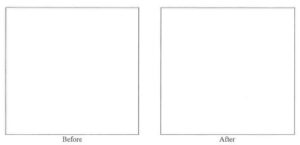Virtual Balloon Buddies
Subject: Physics
Grade Level(s): Grade 4
Topic: Charge Carriers
Big Idea(s):
- Students know electrically charged objects attract or repel each other.
- Students know charged particles are sources of electric fields and are subject to the forces of the electric fields from other charges.
- Students know static electric fields have as their source some arrangement of electric charges.
What you need:
- A virtual Balloons application is available here.
Grouping: Explore in groups of 2 or 3
Vocabulary Words:
Time Needed:
Summary:
In this activity we will charge balloons and see how they interact with other charged and neutral objects using a simulator that allows you to visualize the charge carriers.
Learning Goals / Objectives:
1.) Students will learn that there are two types of charge: negative and positive.
2.) Students will learn that:
- a neutral object is charge balanced. It has – the same number of electrons (negative charge carrier) as protons (positive charge carrier)
- a negatively object has extra electrons
- a positively charged object has some electrons removed
3.) Students will learn that an object, like a balloon, can be charged by rubbing it with materials that either remove or add electrons.
4.) Students will observe how charged objects interact to see that:
- objects with like charges repel
- objects with unlike charges attract
- objects with a charge attract neutral objects
Background
Anticipatory Set:
Driving Questions
1.) How do charged things interact with:
• Other charged things?
• Neutral things?
2.) What does rubbing have to do with charge?
3.) Why are neutral things attracted to charged things?
4.) What does it mean to:
a. have a + charge?
b. Have a – charge?
c. Be neutral?
Instructions / Activities:
If the Java program is not installed on your computer go to:
http://phet.colorado.edu/en/simulations/category/physics/electricity-magnets-and-circuits and click on the “Balloons” icon.
1.) BEFORE YOU START: Under charge display, click the “Show no charges” radial button.
2.) Before you rub the balloon against the sweater … What happens when you let go of the balloon:
- Near the sweater?
- Halfway between the sweater and the wall?
- Near the wall?
Can you explain your observations?
3.) Use your mouse, click and hold to rub the balloon against the sweater. What happens when you let go of the balloon
- Near the sweater?
- Halfway between the sweater and the wall?
- Near the wall?
Can you explain your observations?
4.) When the balloon is rubbed against the sweater it picks up a negative charge.
- Make a prediction: 1st- Sketch a diagram of the sweater before and after charging that shows the positive and negative charges.
- Sketch a diagram of the wall that shows the positive and negative charges before the charged balloon is present and after the charged balloon is present.
5.) Test your predictions. Under charge display, click the “Show all charges” radial button.
6.) Repeat steps 2 and 3.
- Do your observations make sense?
- Based on this model… which charge carrier (positive or negative) can move within an object.
- Do your sketches in 4.) match this model? ‘If not, what changes do you need to make?
7.) Go hog wild and play with the simulator. Can you make one balloon bully another?
Assessment:
Teacher’s Discretion
Wrap-up / Closure:
Teacher’s Discretion


